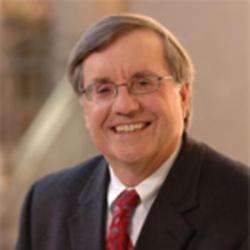This report was produced as part of the January 24, 2019, event Improving opportunities for those who want to work longer.
The American population is aging; and as a result, a larger share of the actual and potential labor force is now age 55 years and over. The Bureau of Labor Statistics reports that the proportion of the labor force age 55 and over rose from 11.9 percent in 1994 to 21.7 percent in 2014, and the bureau projects that it will increase to 24.8 percent by 2024. The increasing share of the labor force age 55 and older is driven in part by the aging of the population;1 however, another important component is the substantial increase in the labor force participation rate among older cohorts. The participation rate of individuals age 55 and older rose from 30.1 percent in 1994 to 40.0 percent in 2014.
Thus, older workers have become more important for the nation’s productive capacity due to the aging of the population and increasing proportion of older workers who are delaying their departure from the labor force. However, older workers are currently discouraged from continued employment because various provisions of Social Security and Medicare reduce their take-home pay and thus make extra hours of work less rewarding.
One of the driving forces associated with this population aging is the increase in the remaining life expectancy at older ages. Declines in the age-specific mortality rates at older ages also affect the timing of retirement. With longer life expectancy, retirement at any age requires more savings and pension assets to achieve the same level of annual income. Further increases in life expectancy will lead more individuals to want to work longer and delay retirement. In such an environment, federal policies should be reexamined and modified to remove disincentives for continued work.
In “Enhancing Work Incentives for Older Workers: Social Security and Medicare Proposals to Reduce Work Disincentives” (PDF), Robert L. Clark and John B. Shoven offer three reform proposals that would remove the disincentives for Social Security beneficiaries to remain in the labor force. First, the authors consider the impact of eliminating the earnings test for participants between age 62, the early retirement age (ERA), and the full retirement age (FRA), which is currently 66 and 6 months but will increase to 67 by 2022. Second, they examine the effects of creating a paid-up status for Social Security, a point at which employees and employers would no longer be required to pay the payroll tax and earnings would not alter future benefits. Third, the authors offer a similar proposal for a paid-up status for Medicare, coupled with a policy shift for Medicare that would return the program to its original status as the primary payer for covered expenditures rather than its current status as the secondary payer.
Read the full paper here.
The authors did not receive any financial support from any firm or person for this article or from any firm or person with a financial or political interest in this article. They are currently not an officer, director, or board member of any organization with an interest in this article.
-
Footnotes
- Similar statistics for the population show that 26.2 percent of the national population was 55 and older in 1994, and that this increased to 34.2 percent in 2014 and is projected to increase to 38.2 percent in 2024 (Toossi 2015).
The Brookings Institution is committed to quality, independence, and impact.
We are supported by a diverse array of funders. In line with our values and policies, each Brookings publication represents the sole views of its author(s).





